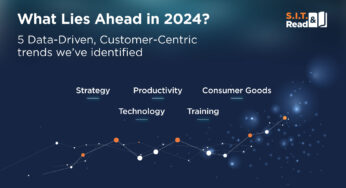Innovators: Beware the Hindsight Bias
Imagine you’re testing a new innovation to see if it can work for your business. You’ve been told by experts that there’s only a 20% chance that it’ll work in your situation. But, something inside tells you it might work. You say, hey, it’s worth a try. Let’s go ahead.
Sure enough, it works! You’re thrilled, and you so say “I knew it all along!” This is good news, and you know that your boss is going to love it, too. So you rush in and sell the idea to the boss and the rest of the team.
Everyone’s excited about the roll out of the new concept. You’ve spent a lot of time and money, and today is the big day. Then, the unthinkable happens. It doesn’t work. How could that be. You try it again, no good. You keep trying it over and over. It works a few times, but for the most part, nothing.
When you look back at all your attempts to use the concept, you realize that it worked…only 20% of the time, exactly what the experts told you.
So what happened here? You were guilty of a bias that we all have called The Hindsight Bias. Hindsight bias, also known as the “knew-it-all-along effect”, is the inclination to see events that have already occurred as being more predictable than they were before they took place. Hindsight bias causes you to view events as more predictable than they really are. After an event, people often believe that they knew the outcome of the event before it actually happened.
Hindsight bias can cause memory distortion. Because the event happened like you thought it would, you go back and revise your memory of what you were thinking right before the event. You re-write history, so to speak, and revise the probability in hindsight. Going forward, you use that new, higher probability to make future decisions. When in fact, the probabilities haven’t changed at all. That leads to poor judgement.
Hindsight bias can make you overconfident. Because you think you predicted past events, you’re inclined to think you can see future events coming. You bet too much on the outcome being higher and you make decisions, often poor ones, based on this faulty level of confidence.
To avoid hindsight bias, keep these pointers in mind:
- First, the future is not predictable. When you start to think you can predict it, remember, everyone else thinks they can too. Someone is always wrong.
- Make decisions based on what the data says is likely to happen, not based on what you think is going to happen.
- If you make a prediction, and that prediction comes true, don’t revise the odds because of the outcome. The probabilities haven’t changed.
- Finally, always lay out a plan of action before you start any initiative. Include in that plan any data or expert advice about possible outcomes for the initiative. That’ll help keep you honest at those times when you think you have a magic crystal ball.
Recent Posts
Innovation Behavior
Innovation is a skill, not a gift. Top organizations drive growth by nurturing and investing…
Should you learn TRIZ? – Yes. ….and No.
Are you in the world of problem solving? Is problem solving a skillset you have…
What Lies Ahead in 2024?
5 Data-Driven, Customer-Centric trends we’ve identified This is not just another conventional forecast. Over nearly…
Fork or Chopsticks – Which Innovation Tools Do You Use?
Imagine a chef, who only uses a spoon. Imagine a dentist, who only uses a…
The Moat Mentality: Exploring New Frontiers in Innovation Methodologies
In investing and business strategy, we often speak in terms of moats. Warren Edward Buffett…
Was it a Breakthrough or an Adjacency?
This year, P&G’s Febreze celebrates its silver anniversary as a brand. But not all 25…





